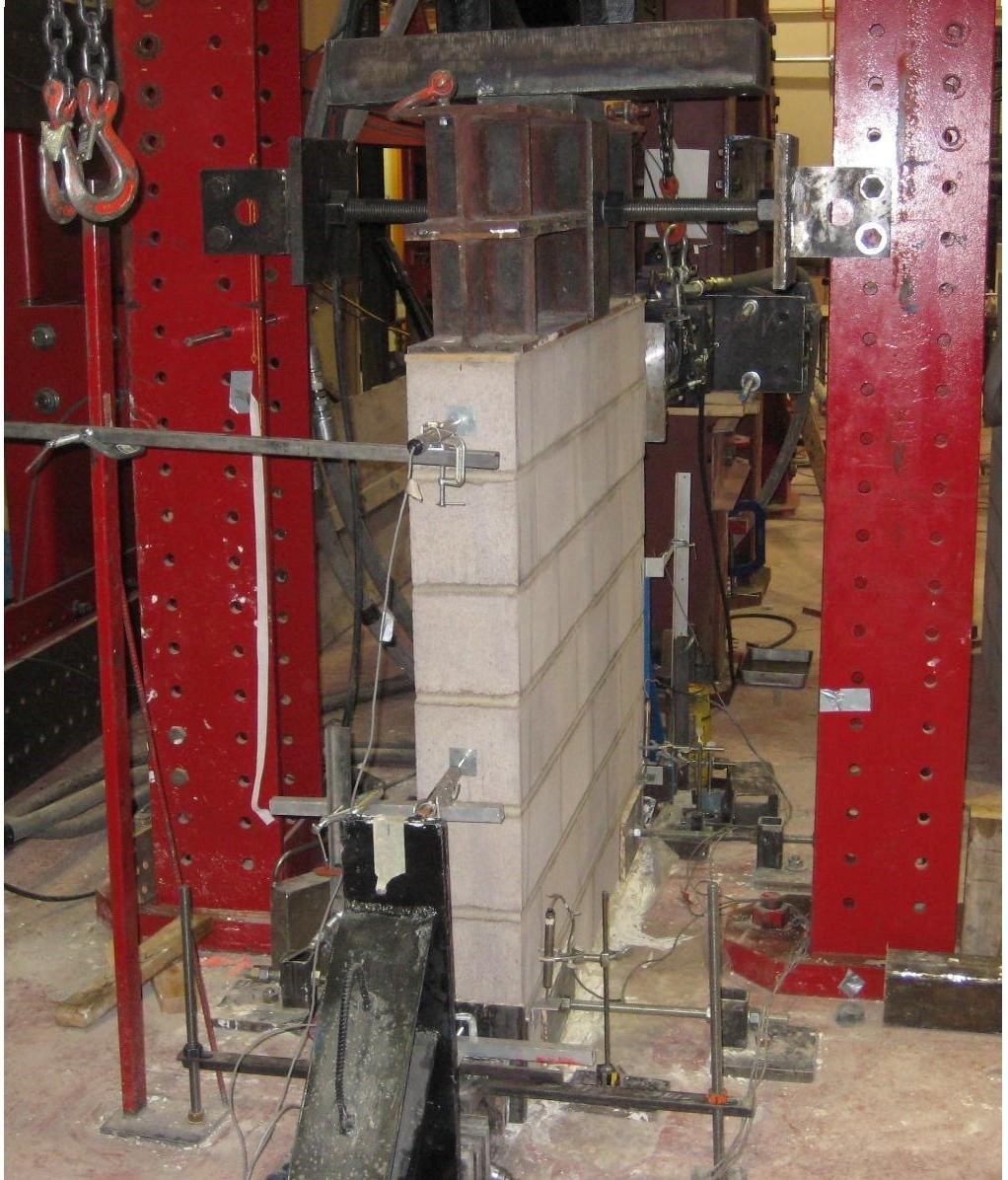SHEAR OF CONCRETE MASONRY WALLS
A.F. Oan1 and N.G. Shrive2
- PhD Student, Department of Civil Engineering, University of Calgary, afoan@ucalgary.ca
- Professor, Department of Civil Engineering, University of Calgary, ngshrive@ucalgary.ca
ABSTRACT
The behaviour of plain and bed joint reinforced concrete masonry walls subject to monotonic inplane lateral (shear) load was examined. Tests were carried out on 18 walls (1.6 m long by 1.4 m high) with different levels of axial stress and different ratios of horizontal reinforcement. The results show that the bed joint reinforcement did not increase the shear strength of the masonry walls but rather decreased the shear strength, especially under low levels of axial loads. This finding is in contrast to many codes around the world which specify that the shear strength of a wall be determined by adding the strength of the masonry in shear to the strength of the shear resisting steel. The results show that there was negligible strain in the reinforcement until the masonry cracked – that the horizontal steel was activated only after the wall had cracked. Thus, the role can be summarized as increasing the ductility of the shear walls after failure; that is, after the peak load had been reached.
KEYWORDS: bed joint reinforcement, concrete masonry, monotonic loading shear strength.
PDF file: A1-1



